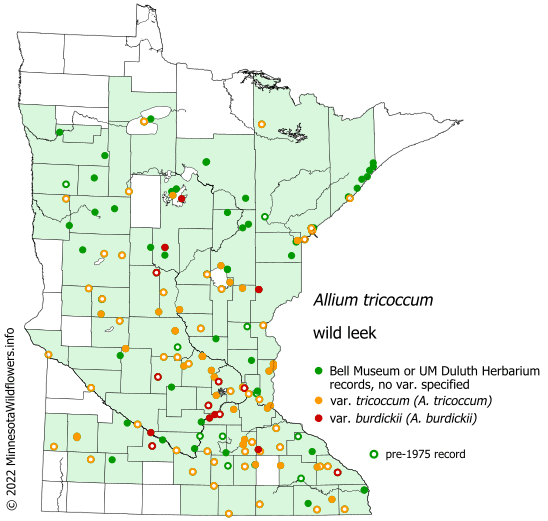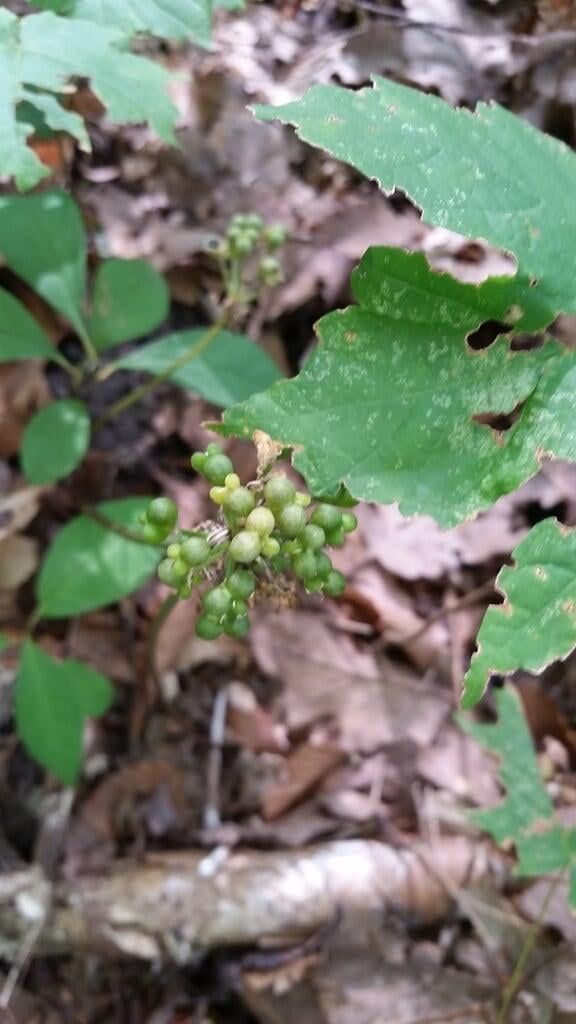Allium tricoccum
Wild Leek Description:
Allium tricoccum, also known as wild leek or ramps, is a perennial plant in the onion family. It typically grows to a height of 6-9 inches and has broad, smooth, and slightly fleshy leaves that are elliptical in shape. The leaves emerge in early spring from underground bulbs, which are small and white, and are clustered at the base of the plant. In late spring, a flower stalk emerges, bearing a dense cluster of small, white or pink flowers arranged in a spherical shape. The plant produces a distinctive, pungent smell that is similar to garlic or onions.
Allium tricoccum is found in central and eastern North America, from North Dakota to Maine, and is commonly found in deciduous forests and wooded areas. It is a popular wild edible plant, and its leaves and bulbs are used in a variety of culinary dishes. However, over-harvesting of wild ramps has led to concerns about the sustainability of their populations, and efforts are being made to promote responsible harvesting and cultivation practices.
Native Range:
Wild leak ranges from the Dakotas in its western range all the way eastward to Maine. It can also be found natively in more southern states such as Georgia, but is more commonly found in northern climates of the united states.
Standard Plant Information:
Plant Height: 6"-9"
Bloom Time: June - July
Preferred Habitat: Does well in part shade to full-shade. Often found moist, rich woodland habitats.
Sowing:
For most homeowners, the best option is to scatter seed on the ground by hand broadcasting at a minimum of 16-64 pls ounces per acre. For even coverage, we recommend that you broadcast seed in perpendicular rows across the site to ensure even coverage.
You’ll want to broadcast any grass seed first, which will get raked into the soil lightly. Next, it is ideal to mulch the area lightly with either a clean (no seed) straw or preferably with our native Little Bluestem straw, sold at our retail garden centers. After a light mulching is complete, now it’s time to broadcast your native wildflower seeds, which should not be raked into the soil. A good rain or watering is sufficient to cover the seed.
Planting:
Simply dig a hole in the soil slightly larger than the plant’s roots. Ensure that the soil line of the plant is maintained during the transfer (i.e. the plant should be at the same level with the ground as it was in the pot). Pack any loose dirt back around the plant and make sure you water it well the same day to ensure it has the best chance of survival.










